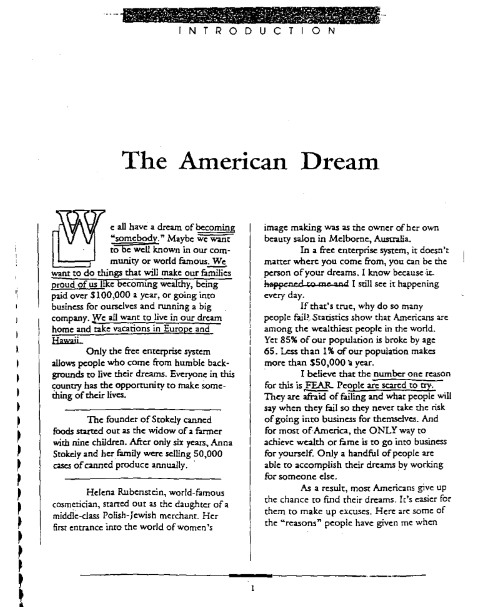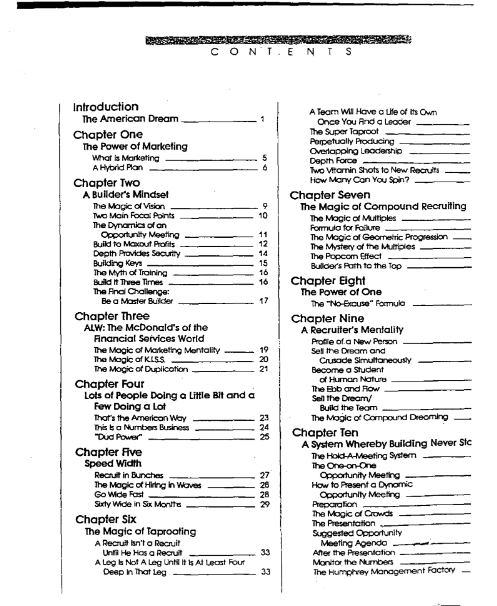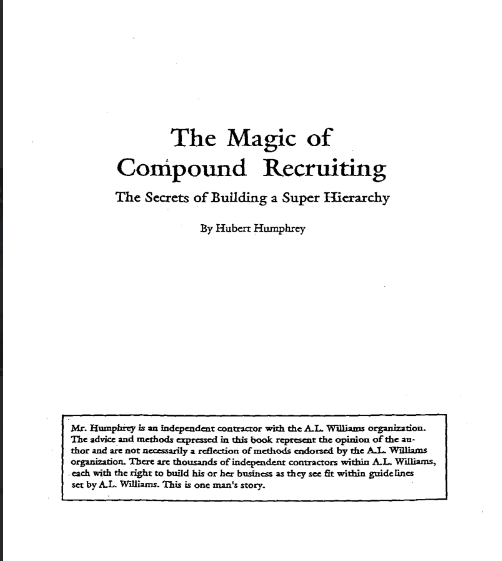


What do I mean by the word “mar- keting?” Look around you. Nearly every business you see has something to do with marketing regardless of what that business is. Marketing is simply distributing a product or service to a consumer. There are millions of businesses that we don’t think of as “market- ing” businesses, but in actuality, marketing is the most important part of the business. Without marketing, there would be no profits. Take IBM for example. If I asked you what IBM did, you’d say it manufactures business computers. That’s only partially correct. It not only manufactures equipment, it DISTRIBUTES that equipment. When IBM was the only game in town, it could count on the product to “sell itself.” Today, it’s a whole other story. There’s competition to think about. It has to hire a sales force of people to market its products.
One of the first benefits I want you to derive from this book is increased VISION. VISION is characteristic of GREAT LEADERS in any business. When I read Ray Kroc’s “Grinding It Out,” I was impressed with his VISION. Kroc was 52 years old with diabetes and arthritis when he first saw the McDonald brothers’ hamburger restaurant in San Bernadino, California. As he watched the restaurant employees make hamburgers and french fries for long lines of lunch customers, he IMMEDIATELY saw the potential of duplicating this successful business in towns all across the country. He didn’t just think, “I think I’ll open one of these 30 miles from here.” He immediately began formulating a plan to open NUMBERS of them in many different places. Willard Marriott also had VISION. When Marriott was going to school in Wash- ington, D.C., he sold hot dogs on the street. At that time, he envisioned restaurants all over the country. His restaurant interests eventually led to a massive hotel chain.
As you can see, what many people think is the PRIMARY objective, is actually the THIRD objective. I see people make this mistake all the time. Someone focuses on getting high numbers of new faces at his Opportunity Meeting every week and he thinks he’s really building something big. Remember the “warning?” This may work for a while, and certainly people have tried it, but it will never build a Super Hierarchy. Getting “old” people to come to the meeting is EQUALLY as important as having “new” people there. Why? Because they are your “natural resources.” They know about the opportunity. They’ve been trained, and they know what they’re doing. They already know how to sell the products and our busi- ness opportunity to someone else; they just need more motivating!
The most important factor is No. 1, the “continuous opening of outlets.” For McDonald’s, the outlet is a hamburger stand. For Coca-Cola, an outlet is the store that sells Coke or the drink machine in a lobby. If you’re on a remote country road somewhere and get thirsty, you can go into the general store and there’ll be Coke on the shelf. Then you can go 20 miles down the road to a big grocery store where they will have rows and rows of Coke. They sell truckloads and cases each week. Or, you can check into a hotel and up on the fourth floor, find a drink machine that offers Coke. It makes very little difference whether a store or machine sells one Coke or a thousand Cokes a day. The Coca-Cola company is much more concerned with having many outlets. Only after you have a large number of outlets do you begin to concern yourself with factor No. 2: volume production per outlet. Just how many drinks are being sold in this store? You better have your system in place before you get involved with increasing the number of Cokes sold in each store.


